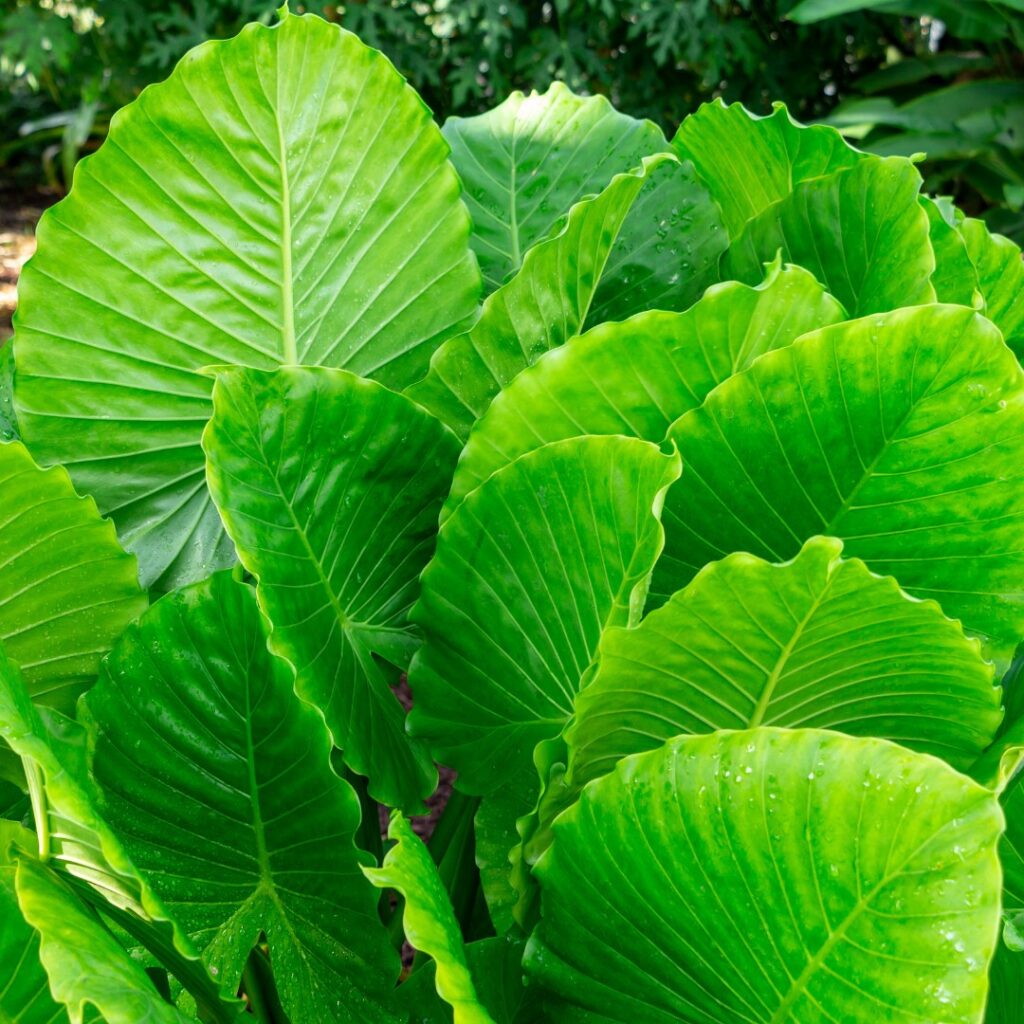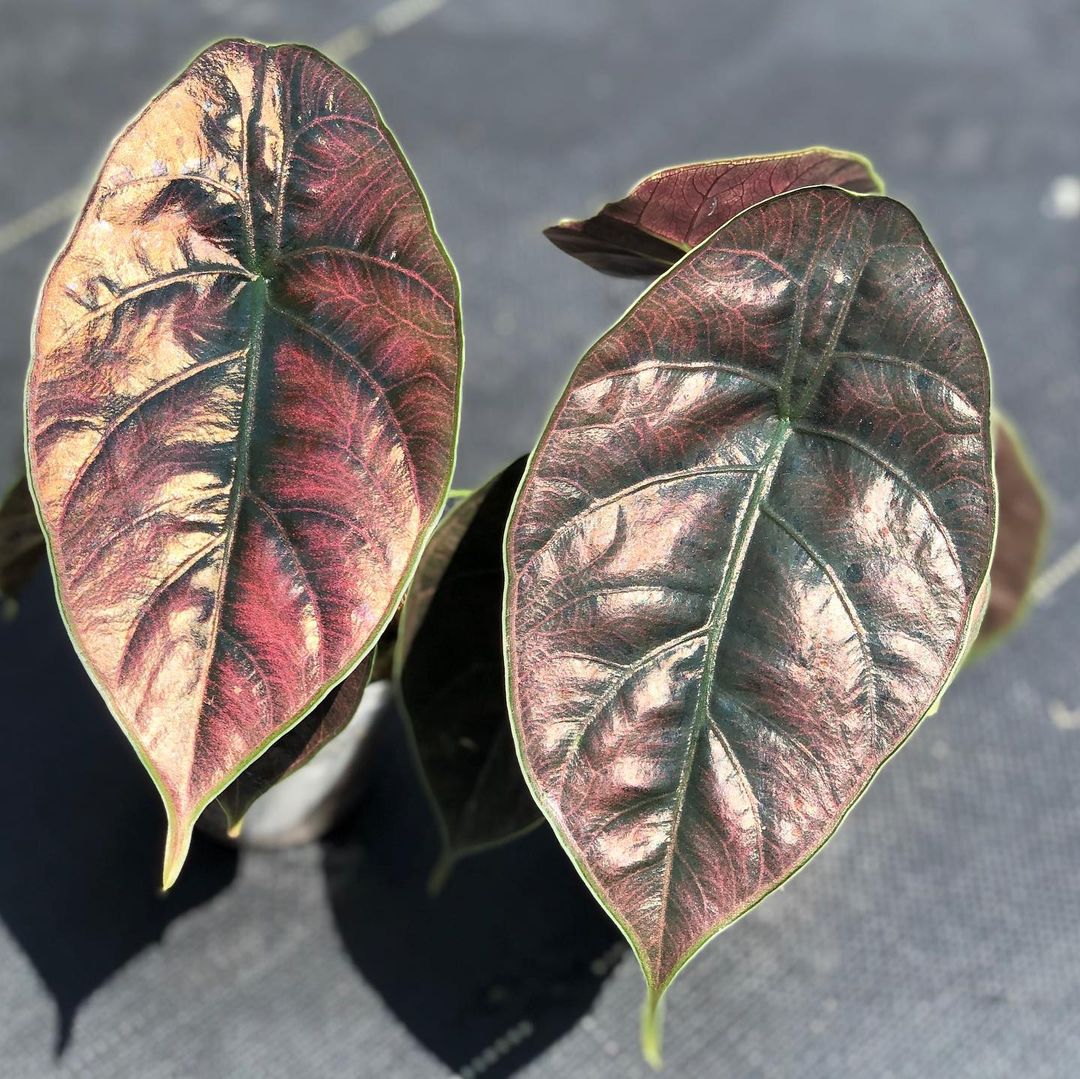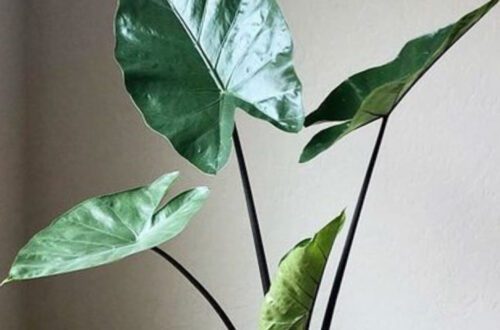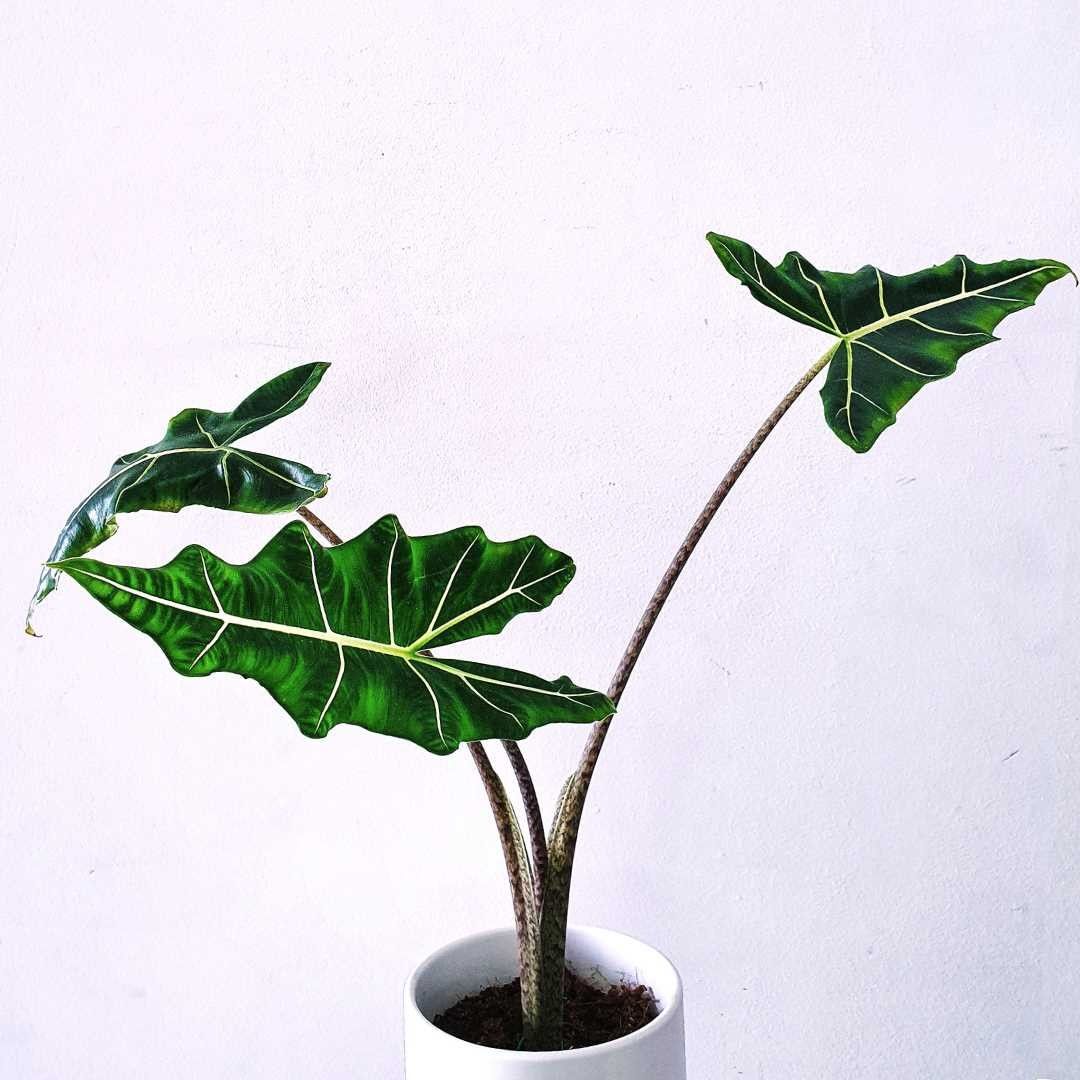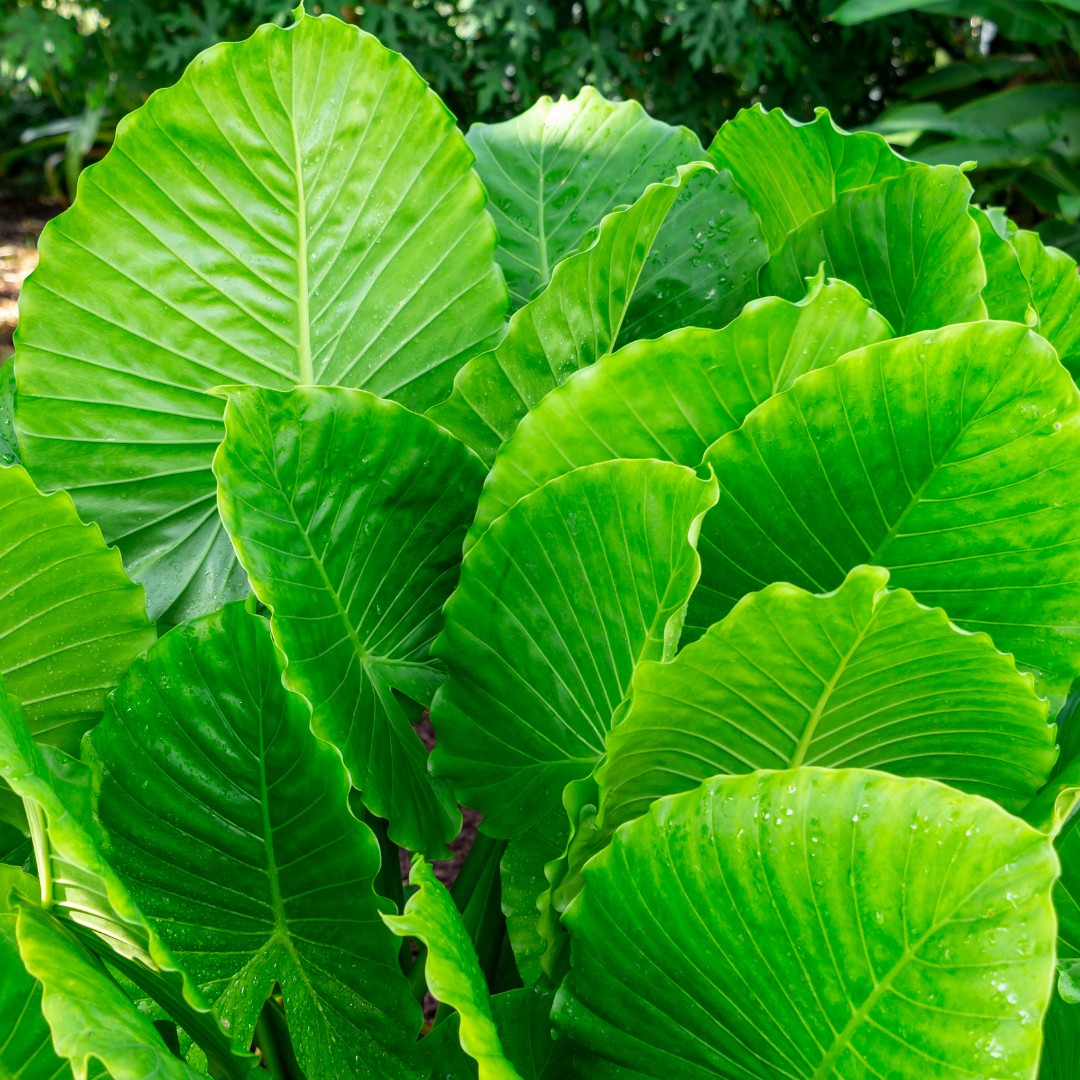
Alocasia California
Welcome to our guide to the Alocasia California all you need to know about care and propagation, including light, water, soil, temperature and humidity needs. The key to caring for an Alocasia California is to give it bright light and moist but not soaking soil.
Alocasia California Care Summary
| Light needs: | Bright indirect sunlight. |
| Watering needs: | Water it once or twice a week when top layer of the soil is dry. |
| Fertilizer: | A diluted, nitrogen-rich fertilizer twice a month in spring and summer. |
| Soil: | A rich, airy soil, well-draining. |
| Humidity: | 60% or more. |
| Temperature: | 50-77°F (10-25°C). |
| Where to buy: | Try our list of Rare Plant Shops. |
| Other names: | Elephant ear, Dwarf elephant ear, Dwarf alocasia |
| Common issues: | Root rot from over watering. |
Introduction
Alocasia California is a low-maintenance houseplant native to tropical areas of Asia and Australia. The striking green, heart-shaped leaves with rough edges set it apart from other members of the family with its distinct appearance. You only need to provide tropical living conditions, and you are all set!
See also: Alocasia Soil, Alocasia Azlanii, Alocasia Low Rider, Alocasia Lauterbachiana, Alocasia Wentii, Alocasia Regal Shield, Alocasia Dark Star, Alocasia Sarian, Alocasia Maharani, Alocasia Tiny Dancer.
Alocasia California Light Needs
Depending on where you plan on growing it, Alocasia California requires bright, indirect light or partial shade. If you are growing it indoors, place it near an East-facing window, or under a shade outdoors.
Tip: they like plenty of light, so keep them in bright window.
How Often To Water
It loves moist soil, but soggy, waterlogged soil can cause various root diseases. Water it once or twice a week when you feel the top layer of the soil is dry. You will have to cut down the watering even more during the winter.
Fertilizer
A diluted, nitrogen-rich fertilizer twice a month is enough for optimal growth of this houseplant. It only needs light feeding during the growing months of the spring and summer.
Alocasia California Soil
You ideally want to get a rich, airy soil that is well-draining as well as light. This ensures the roots don’t stand in water which causes root rot. For more on which soil to buy or how to make your own see: Alocasia Soil.
When to Repot
Even though the plant does not need regular repotting, keep checking the roots for any signs of outgrowth. If you see the roots developing in the drainage holes, consider moving it to a larger pot. Since it does not like being relocated, you can repot it once every 2 years if needed.
Humidity
This tropical houseplant loves a high humidity environment with 60% or more humidity. Lack of moisture may result in the browning of leaves, giving them an appealing look. If you live in a dry climate, you may use a humidifier to maintain the humidity.
Tip: check the soil once or twice a week and aim to keep the soil moist but not dry or soaking wet.
Temperature
It thrives best at 50-77°F (10-25°C).
How to Propagate Alocasia California
Alocasia California grows through rhizomes, so you cannot propagate them through stem cuttings. The best way to propagate them would be through the division of tubers. Take out the plant from its pot and divide the tubers into small segments. Plant them in separate pots and water them regularly to develop new roots.
Alocasia California USDA Zone
They can live outdoors in zones 7b to 10.
Alocasia California Indoor Care
The main thing to do is keep the soil a little bit moist without letting it get soggy. They drip a lot of water from the leaves, which is noticeable indoors. This is nothing to worry about, it is normal for the plant to do this especially when they are well watered.
Alocasia California Outdoor Care
Outdoors, keep it out of direct sun and above 10°C (50°F) at night.
Do Alocasia California Bloom?
Yes they can bloom, they put out a stick of flowers with a sheath around it.
Why Are Alocasia California Leaves Turning Yellow?
As alocasias grow new leaves the older ones will yellow and die, so if it is just the oldest leaf dying it is nothing to worry about. If all leaves are yellowing though it is probably due to overwatering.
Is Alocasia Poisonous?
They are toxic to cats and dogs if eaten. Seek vets advice if they do.
Other Names
Elephant ear, Dwarf elephant ear, Dwarf alocasia, Alocasia Gageana.
Where To Buy
Try our list of Rare Plant Shops.
FAQs and Common Problems
The most common issue it faces is rotting due to excessive moisture. The roots and stem are the most affected parts of the plant. Although rare, it may also have pest attacks, such as aphids and spider mites. Observe your plant daily to detect pests early on, and allow the soil to dry in between waterings to ensure healthy growth.
Is Alocasia California toxic to cats?
It is highly toxic to cats, dogs, and humans and causes severe reactions upon ingestion.
How tall do California elephant ears get?
They are called dwarf elephant ear and grows up to 4 feet in height.
Is Alocasia California an indoor plant?
Alocasia California prefers indirect light for its growth, so it is best to grow it indoors. You can also grow it outdoors under partial shade.
Additional Resources
Buy: we recommend a digital thermometer hygrometer (amazon affiliate link) to measure humidity.
Links:
- More info on the Exotic Rainforest plant page.
Other Articles You Might Like
There you have it, here ends our guide to this beautiful plant. You might also like our other articles:
Alocasia Soil, Alocasia Azlanii, Alocasia Low Rider, Alocasia Lauterbachiana, Alocasia Wentii, Alocasia Regal Shield, Alocasia Dark Star, Alocasia Sarian, Alocasia Maharani, Alocasia Tiny Dancer.
Please follow us on Instagram and Pinterest for regular plant updates and occasional plant giveaways.
